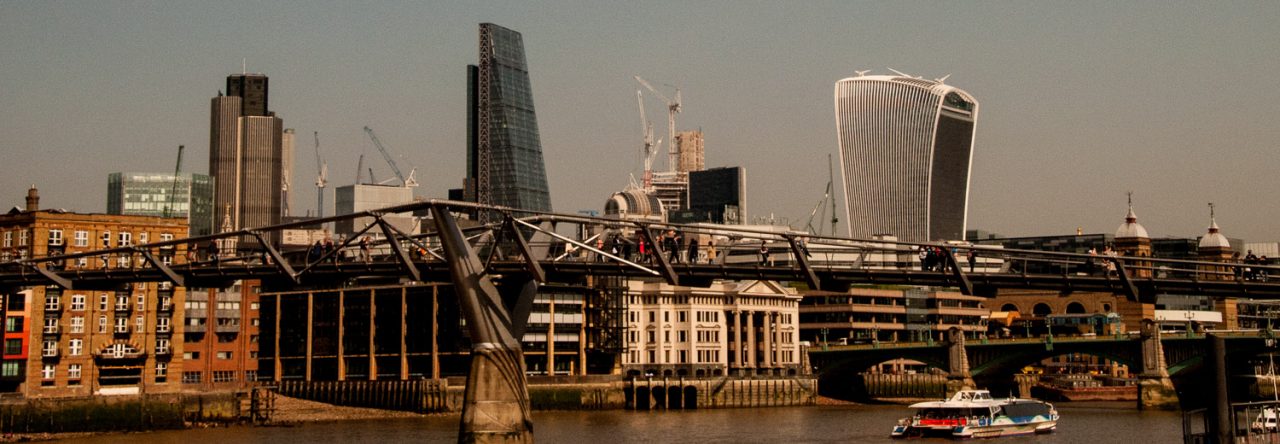One of the great joys of London is that you can walk over the same area again and again and still find something new or, alternatively, more detail about a place you knew already.
Last week I decided to start by visiting the pretty, quiet space in Banner Street known as Quaker Gardens (EC1Y 8QQ). All the other locations I write about today are about five minutes walk away from there …
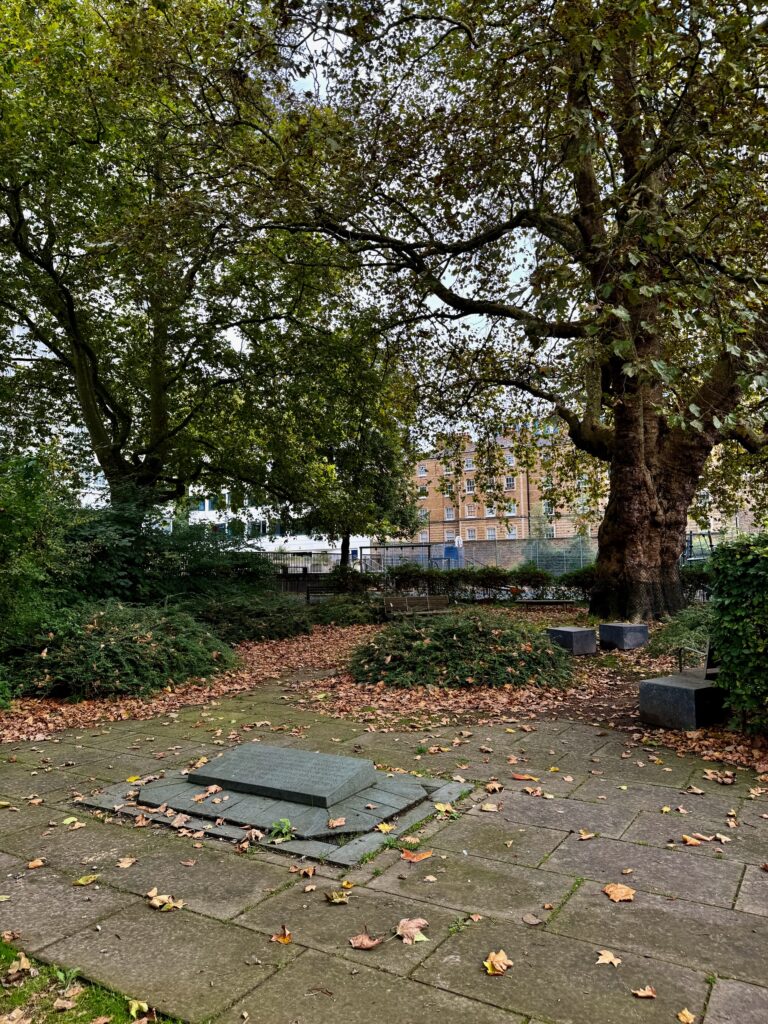
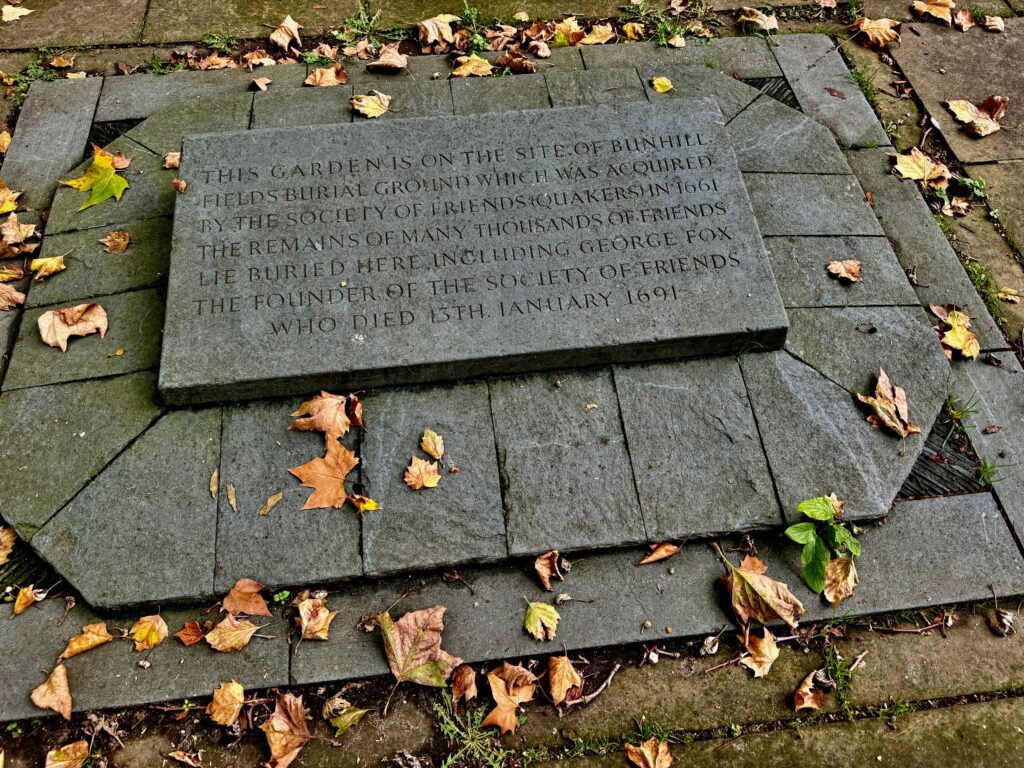
There are three venerable London Plane trees providing shade …
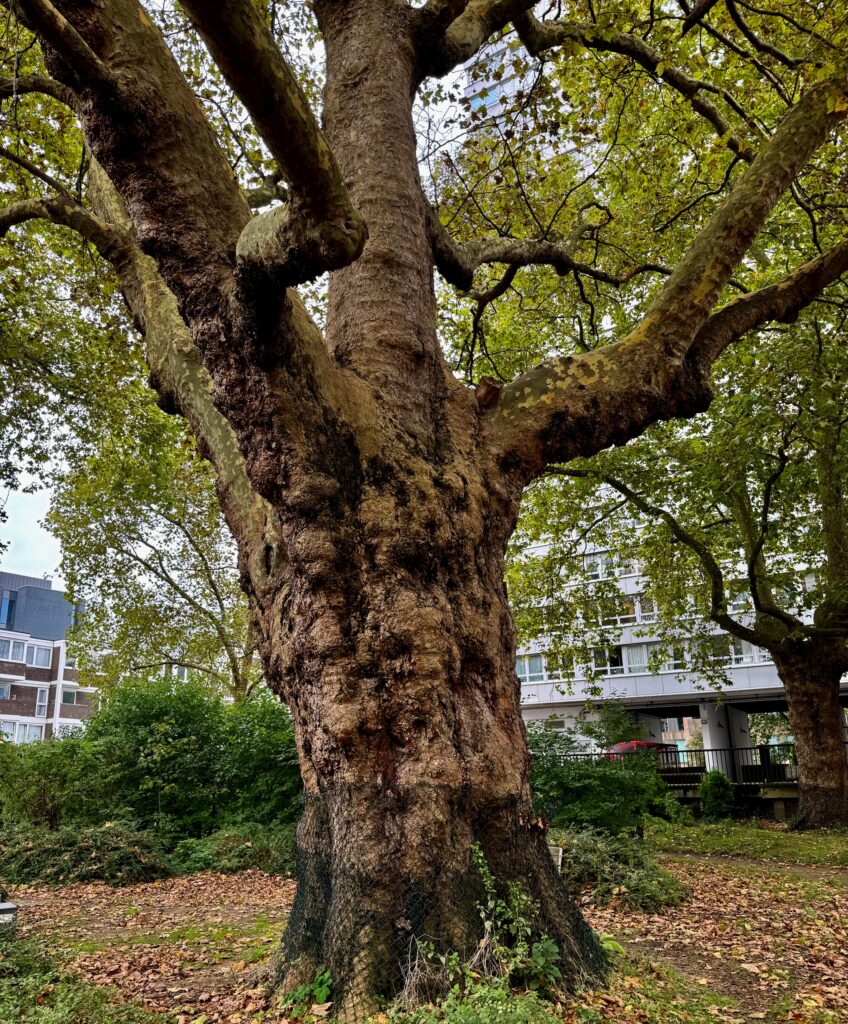
This land, purchased in 1661 for a burial ground, was the earliest freehold property of the Quakers (also known as The Society of Friends) in London. Over a thousand victims of the Great Plague were buried here in 1665.
Here it is on John Rocque’s map of 1746 …
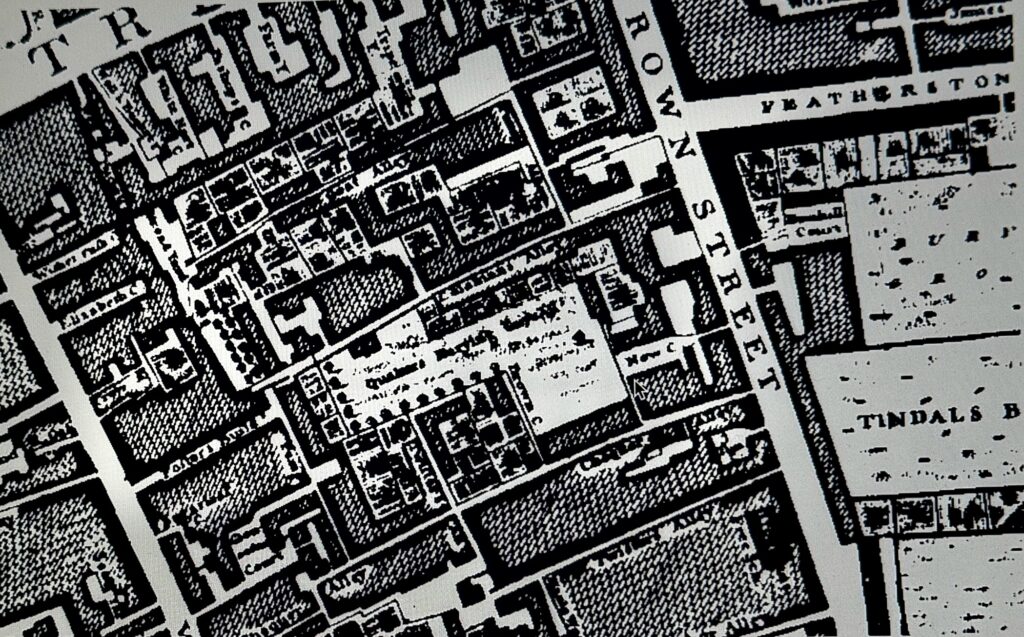
The Burial Acts of the 1850s forced the closure of all central London burial grounds. Having expanded considerably, by the time that the Bunhill site was closed in 1855 there were nearly 12,000 recorded burials.
I found these burial records from 1787 online …
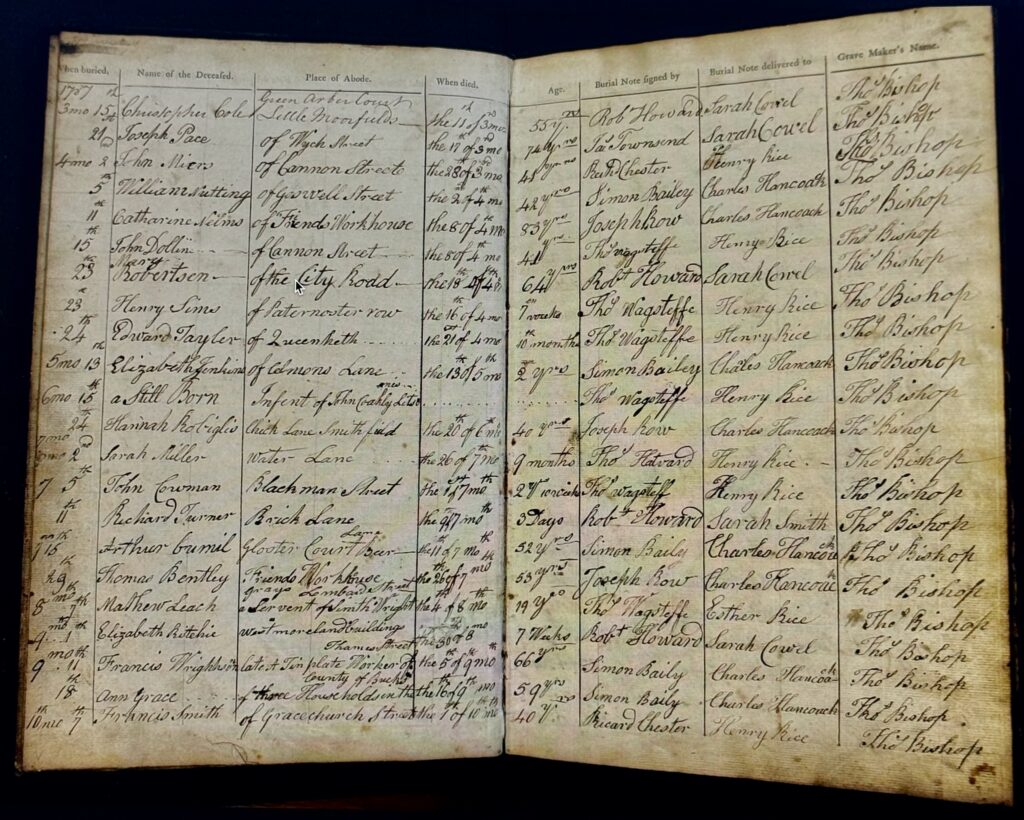
Quaker burials are very simple and Quakers have not traditionally placed headstones on burial sites, being thought too showy or worldly. There is, however, a plain memorial to George Fox, Quakerism’s founder, who was buried here in 1691 …
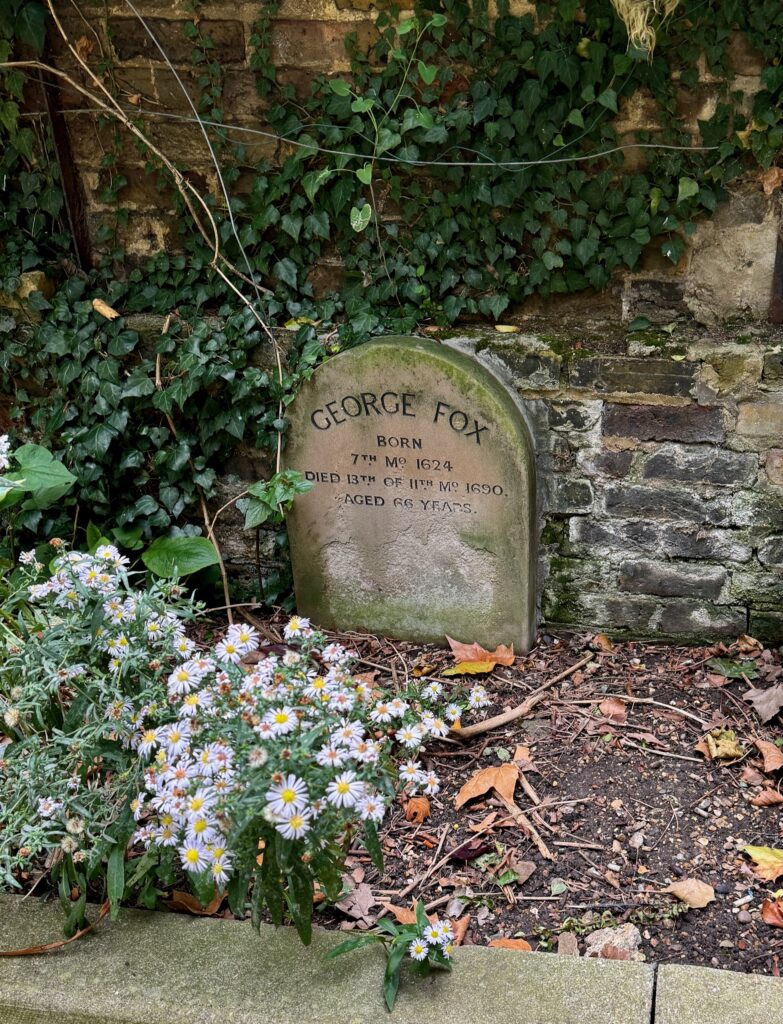
There is also a stone plaque recording the history of the site and buildings …
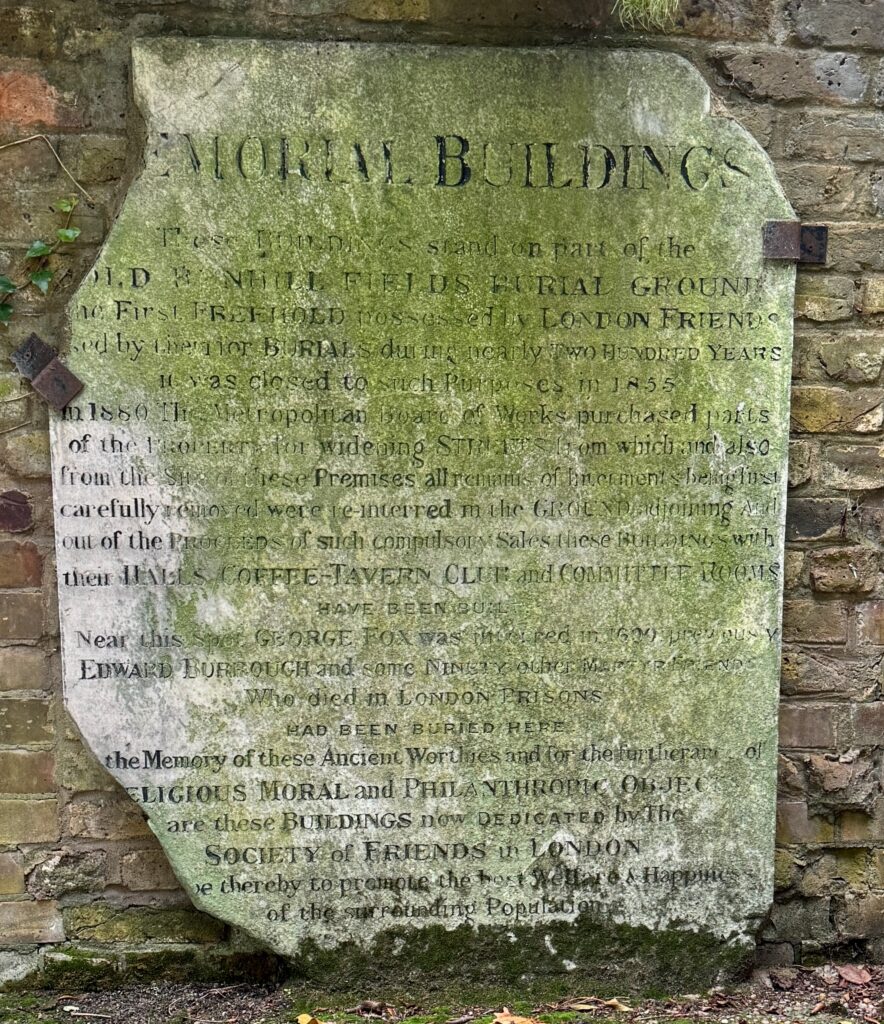
The wording is not very clear now but I have found an earlier image …

Persecution of Quakers was common in 17th century England, one of the most serious punishments being transportation. Among the ‘martyr Friends’ buried here are included twenty-seven who died of plague awaiting transportation on the ship ominously named The Black Eagle. The war with the Dutch, along with the plague, made it difficult to find a ship’s master willing to brave the seas but in May 1665 the Sheriffs of London found someone willing to do so. The sea captain, called Fudge, boasted that he would happily transport even his nearest relations. About 40 men and women were bundled aboard his ship which was lying at Greenwich. Then Fudge was arrested for debt, with soldiers sent from the Tower to guard the human cargo as most of the crew had deserted. As well as the plague deaths, many more prisoners had perished before the ship eventually sailed.
The burial ground lay unused until 1880 when the Metropolitan Board of Works took part of the site for road widening and the compensation money paid for the building of a Memorial Hall, which included a coffee tavern and lodging rooms …
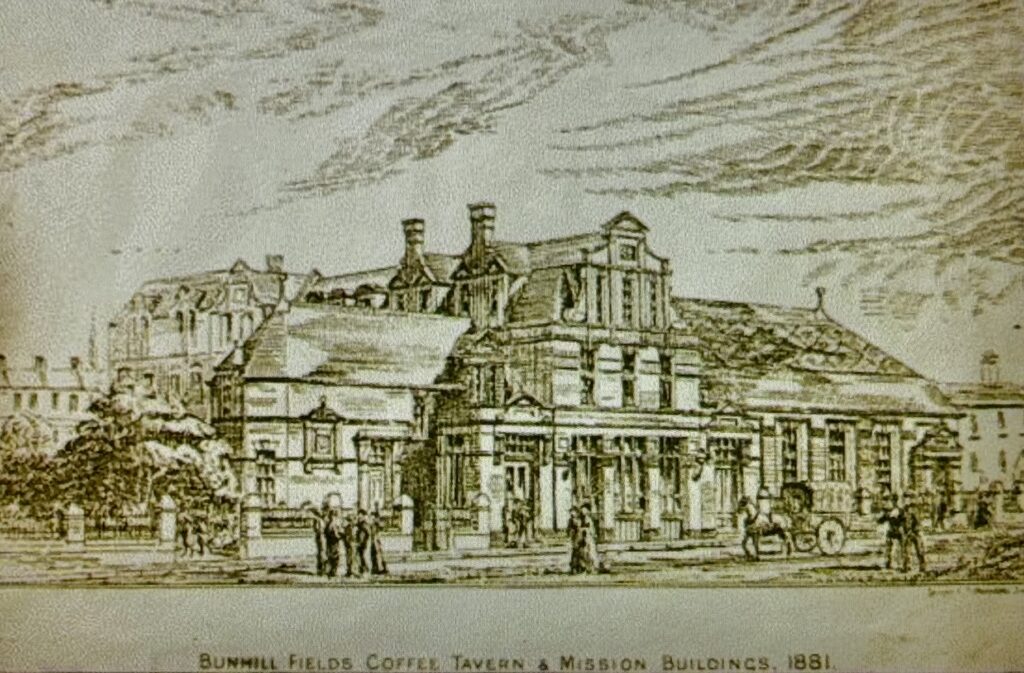
The Hall was destroyed by bombs in 1944. A small surviving fragment, known as the cottage, which had been the manager’s house, was restored to serve as a small meeting house (as it still does to this day) …
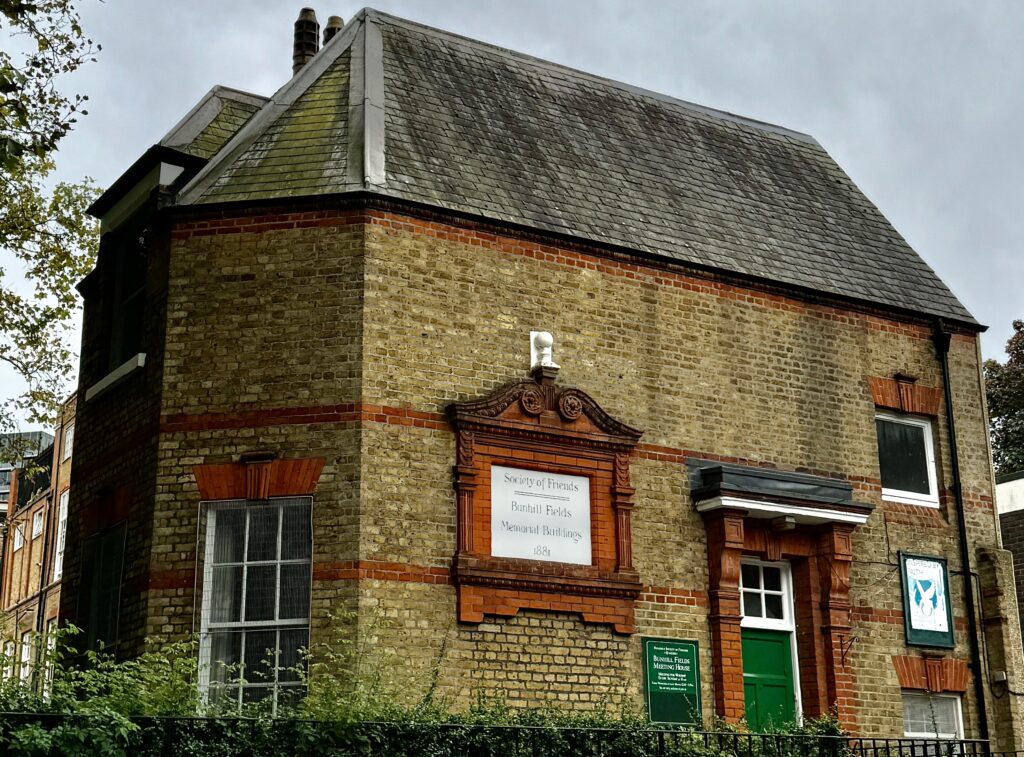
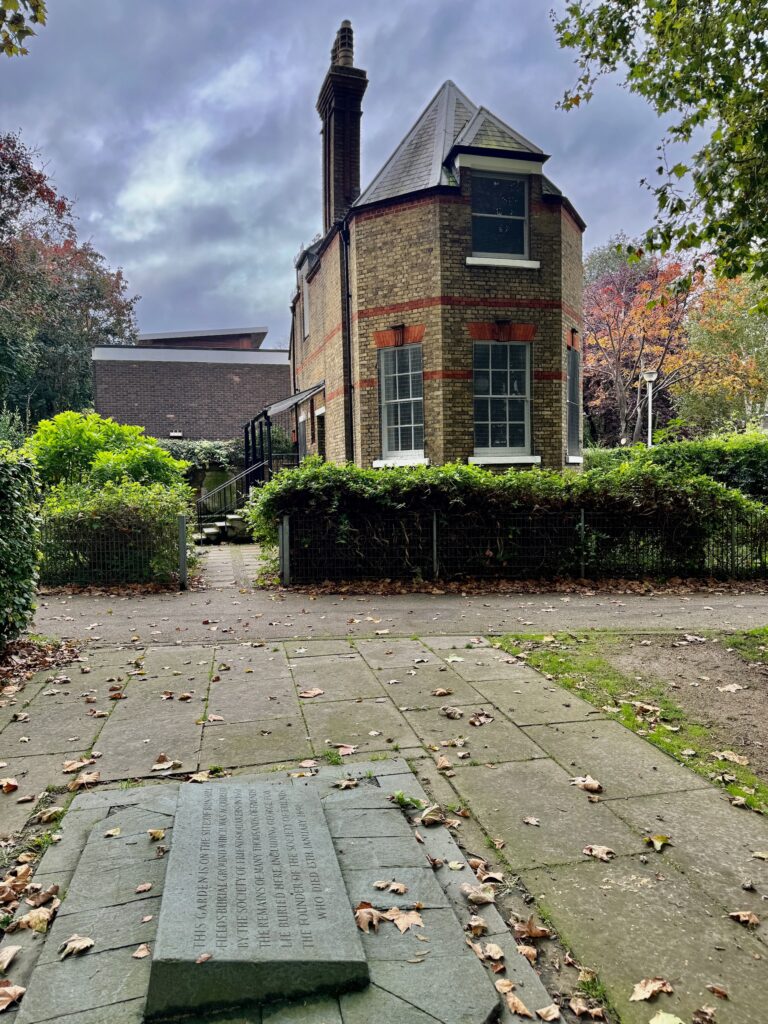
An old plaque dated 1793 …
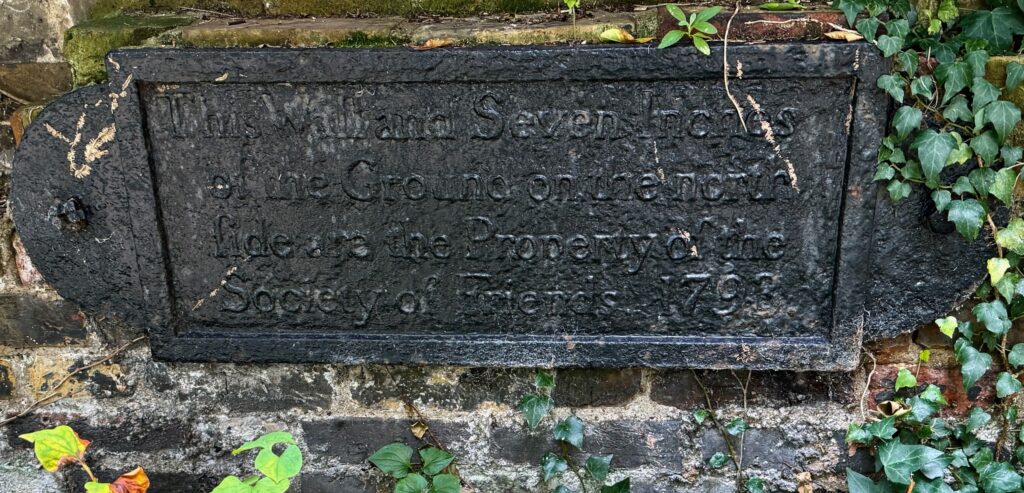
‘This wall and Seven Houses on the grounds on the north side are the Property of the Society of Friends 1793’.
I haven’t been able to find out more about the very sadly missed Marna Shapiro …
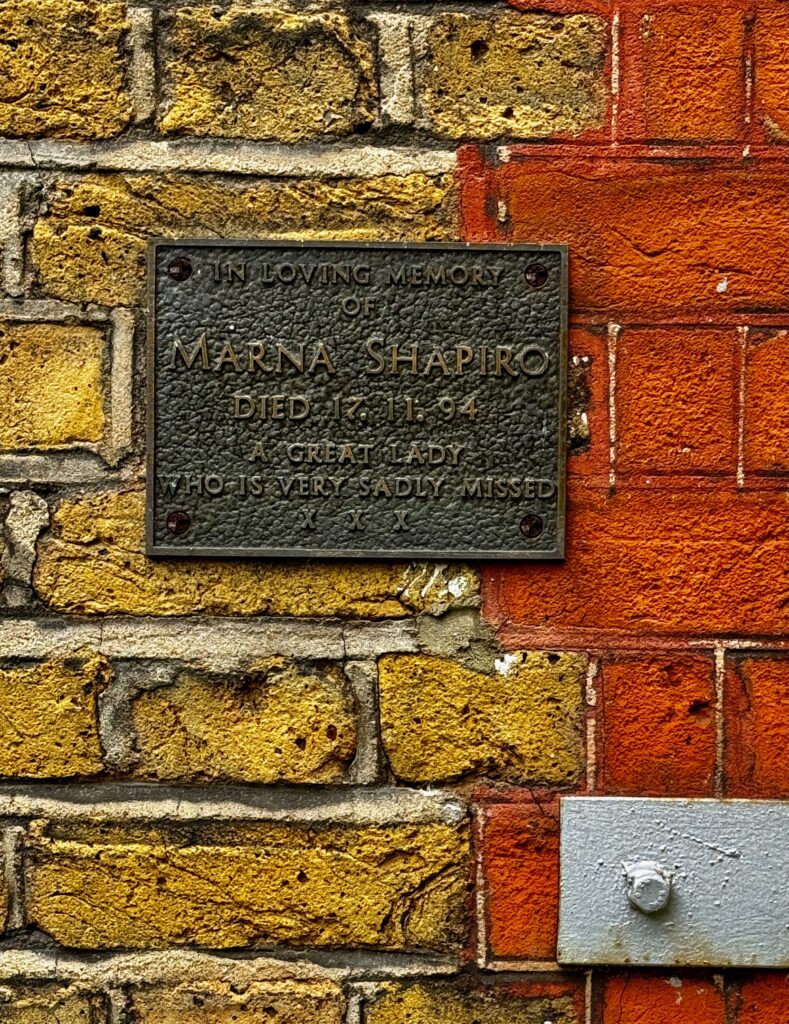
I like the kisses.
A very appropriate place for quiet contemplation …
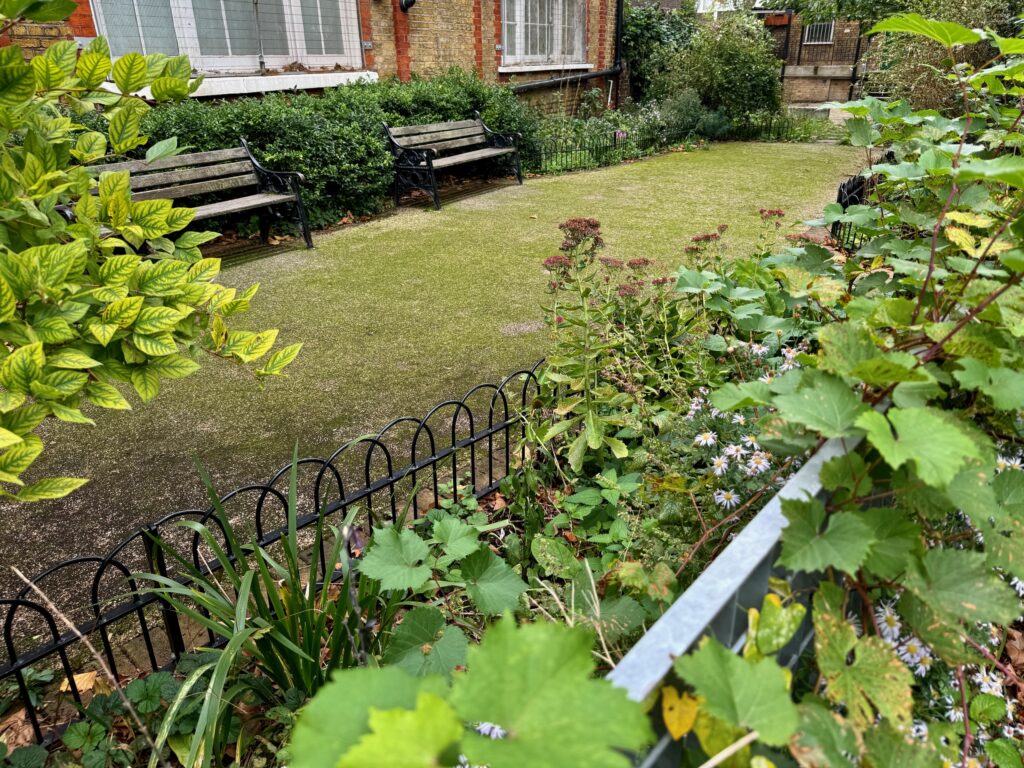
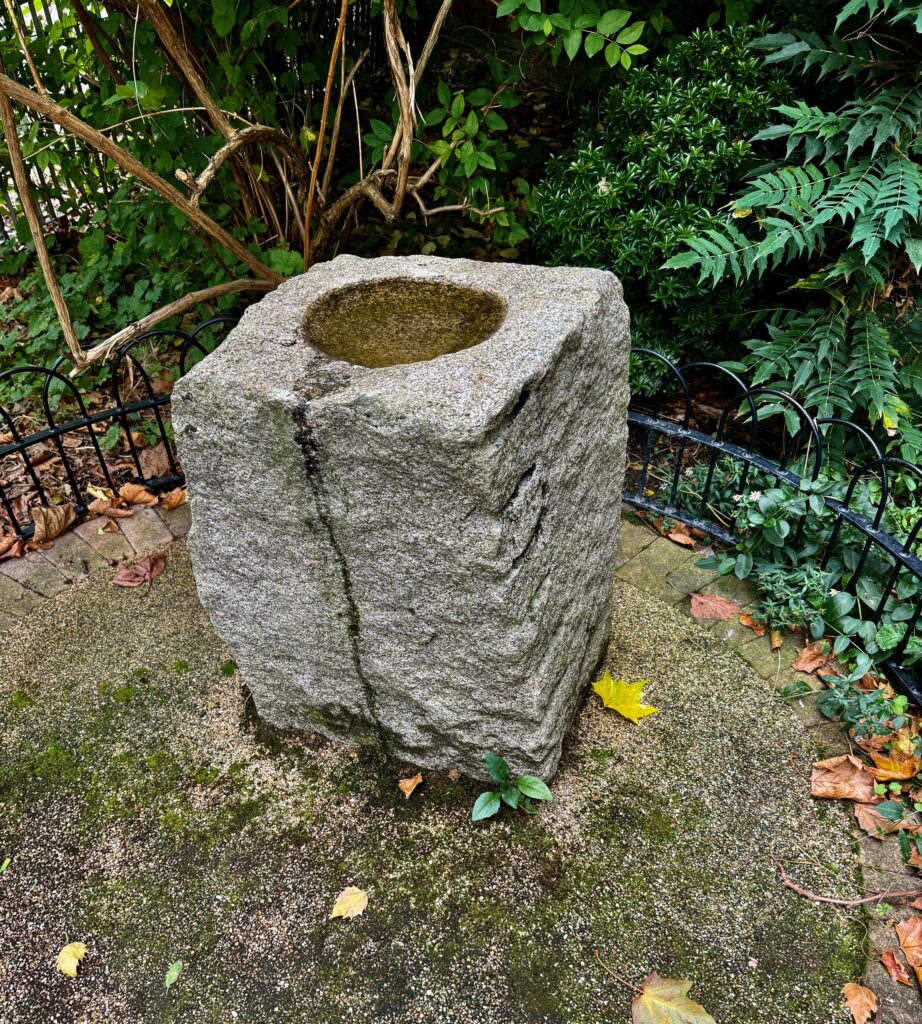
For a brief history of the Quakers I recommend this site – Quakers around Shoreditch. For a more detailed history, I have enjoyed reading Portrait in Grey by John Punshon (September 2006, Quaker Books). It’s where I found the story of the wonderfully named Captain Fudge and the Black Eagle.
Leave the garden by the Chequer Street entrance, turn left, and you will encounter something unusual – wooden block road paving …
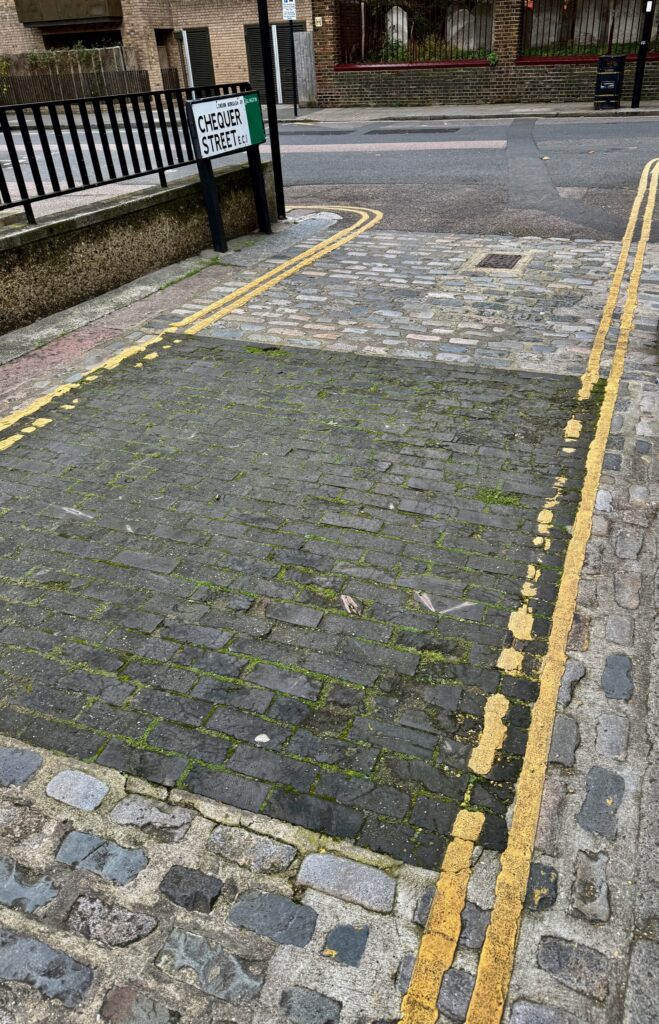
Designed to be durable, but far less noisy than cobbles, experiments with wood block paving started in 1873 and initially proved successful. Eventually replaced by tar from the 1920s onwards, this section is one of few remaining in London. You can just make out some tree growth rings …
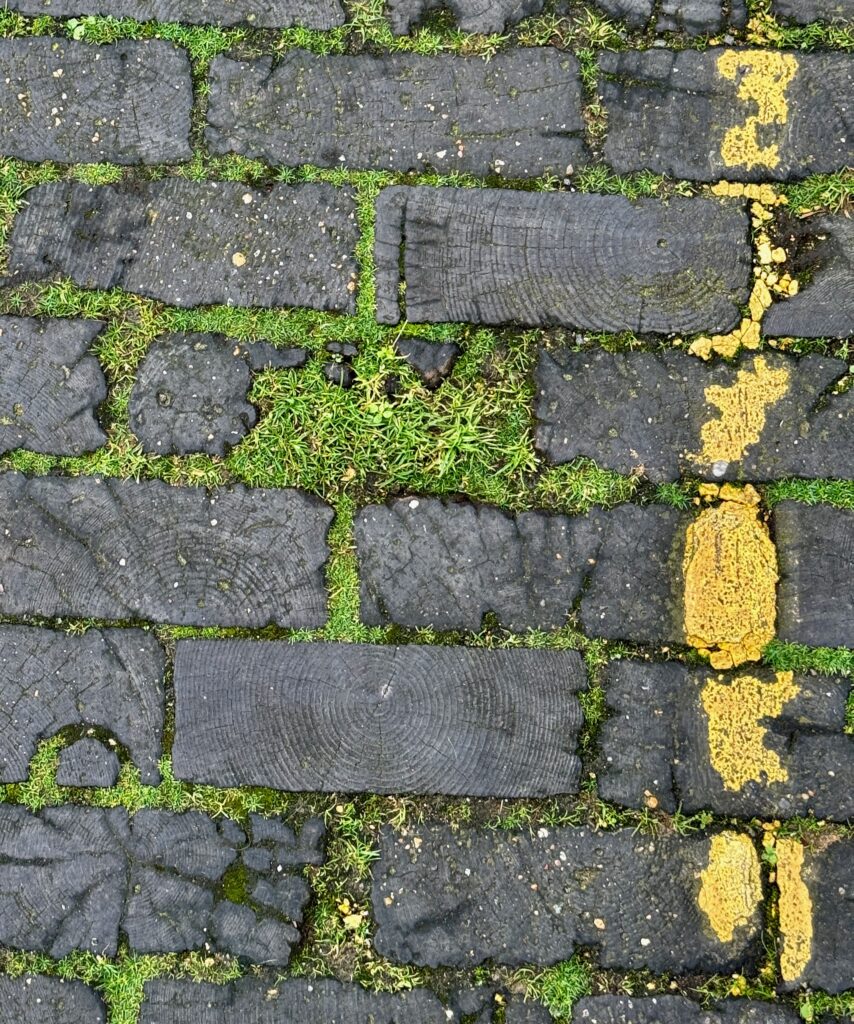
See the brilliant Living London History blog for a fascinating detailed history.
I must have walked past this typical industrial building in Banner Street dozens of times …
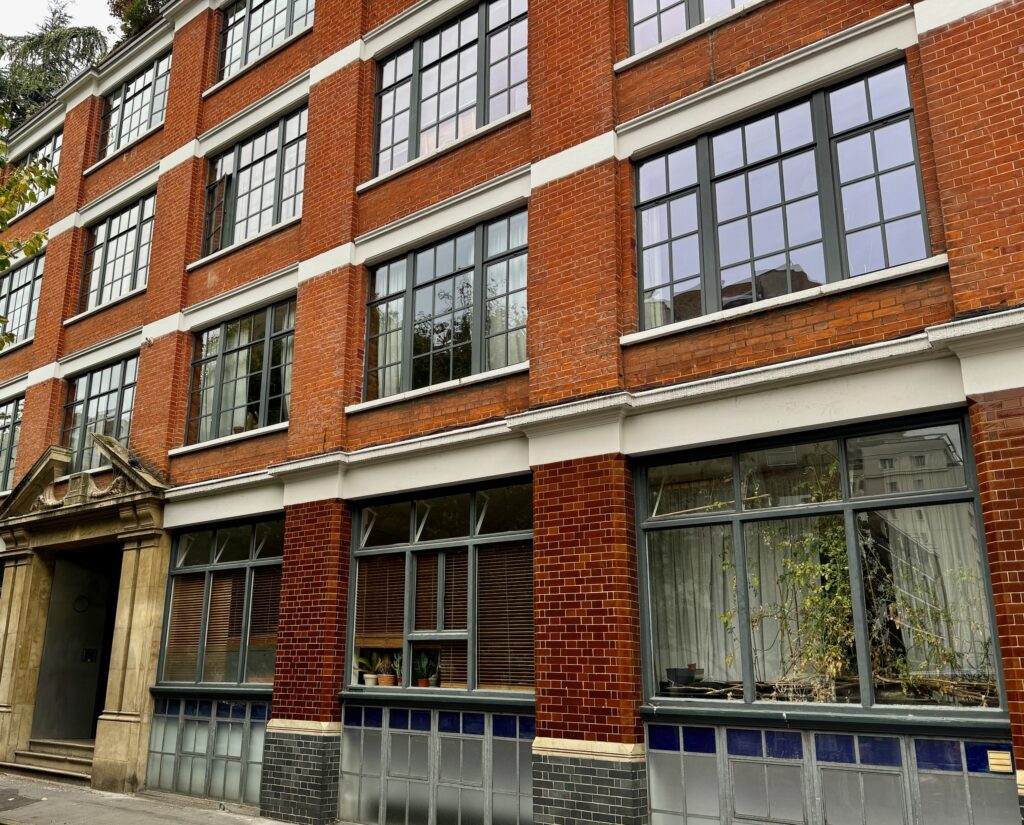
Last week I paused at the rather imposing entrance …
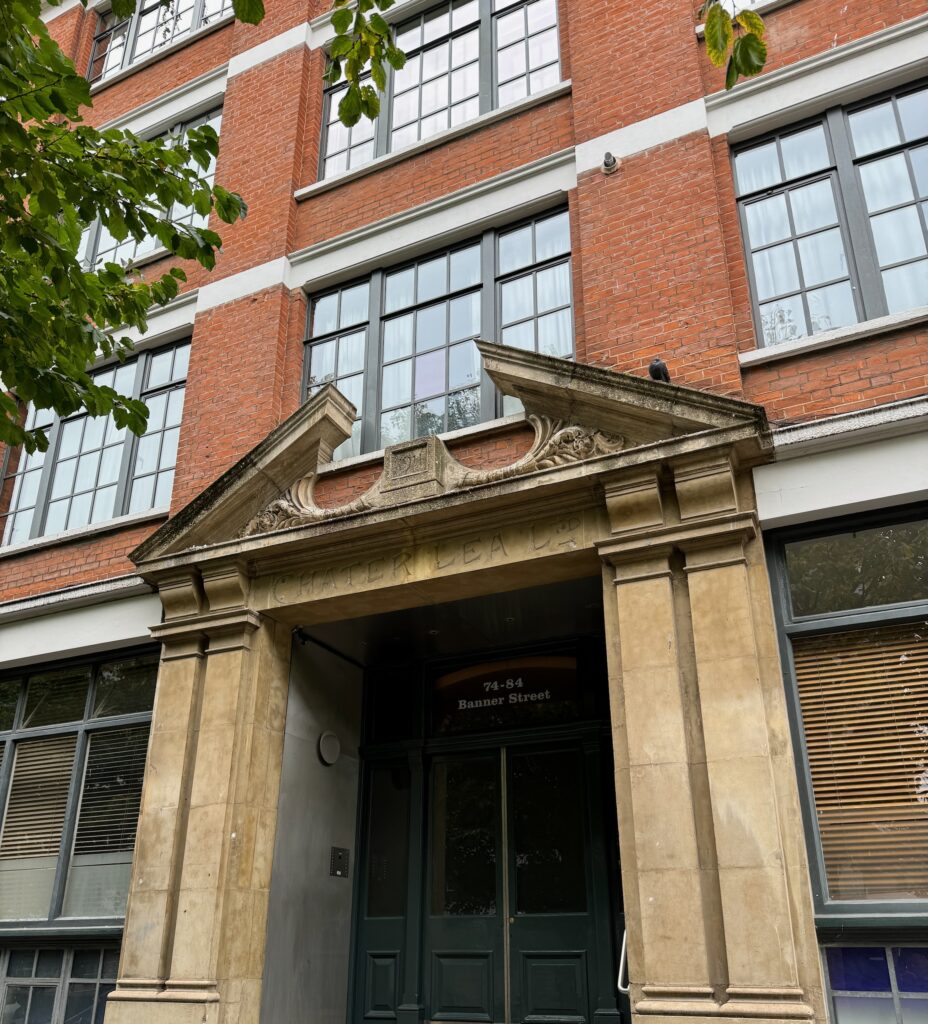
… and looked up …
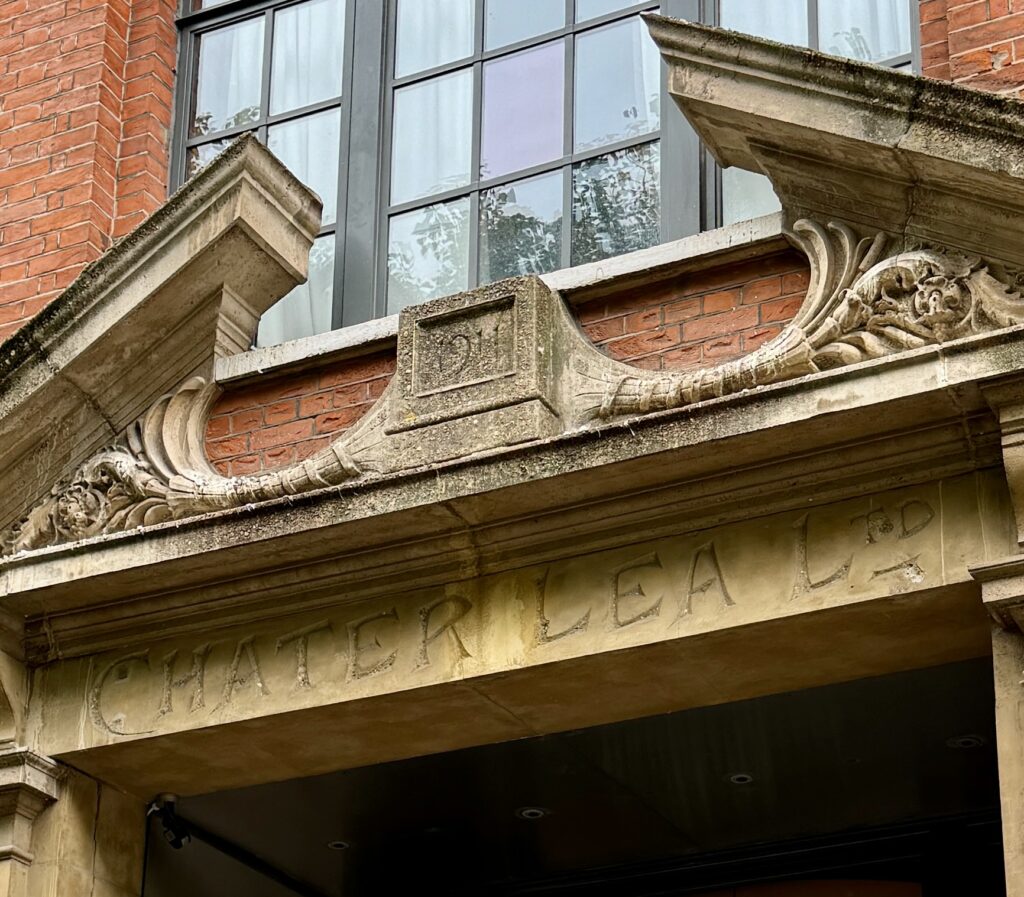
A classical broken pediment, the date 1911 and the company name Chater Lea Ltd. This was a British bicycle, car and motorcycle maker and the Banner Street premises were purpose built for them in 1911. Eventually needing to expand production, they moved to Letchworth, Hertfordshire in 1928.
The company was founded by William Chater Lea in 1890 to make bicycle frames and components. It made cars between 1907 and 1922 and motorcycles from 1903 to 1935. William died in 1927 and the business was taken over by his sons John and Bernard …
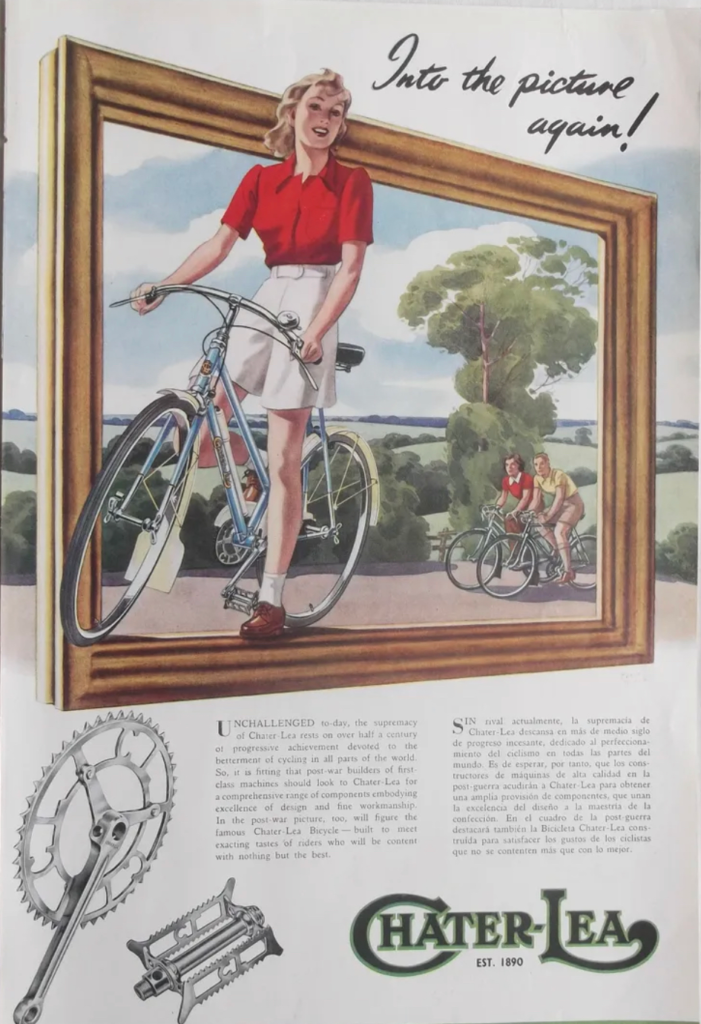


You can read more about the company history here and it looks like they are currently working on a major relaunch. Here’s their website which also contains some great historical background and images.
It is nice to see that this extraordinary piece of work has found a place on Roscoe Street where everyone can see it. It needs to be viewed from a distance for maximum effect …
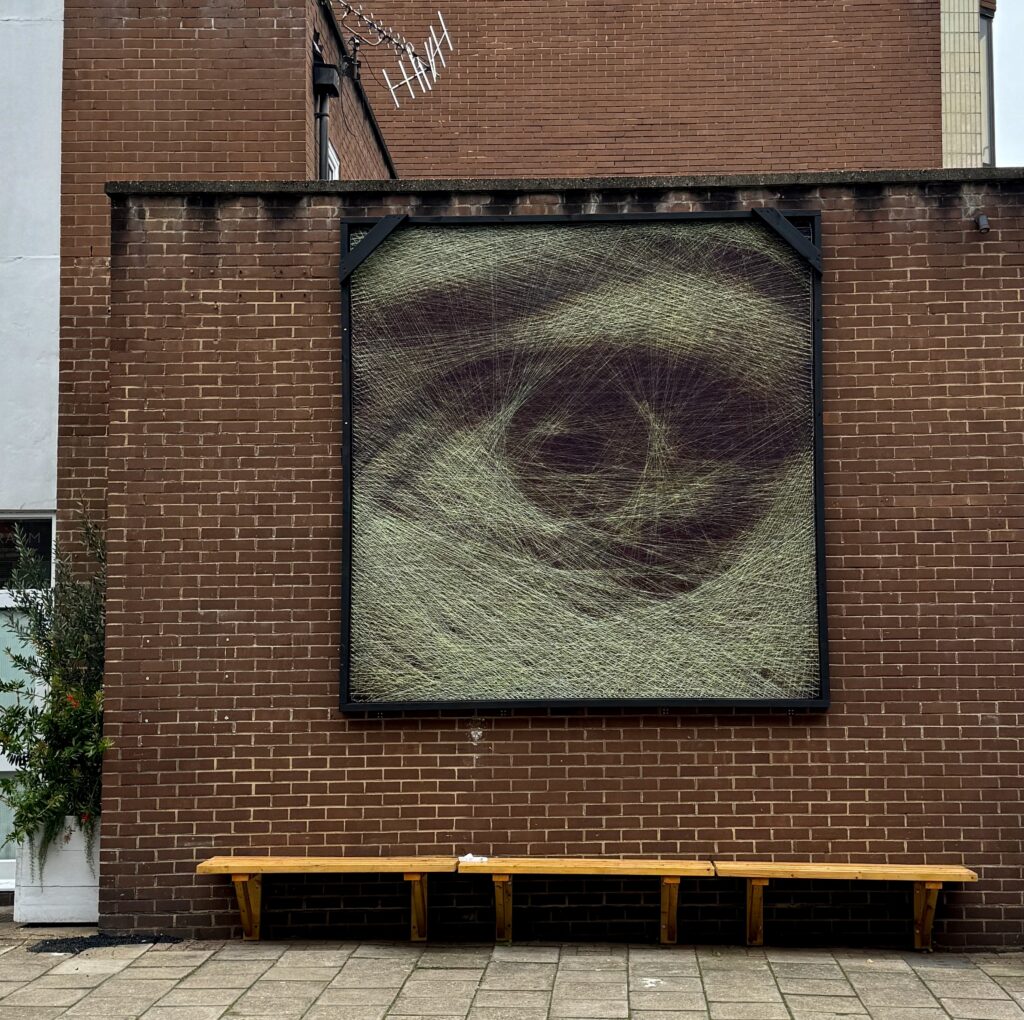
I watched it being created at this year’s Whitecross Street Party …
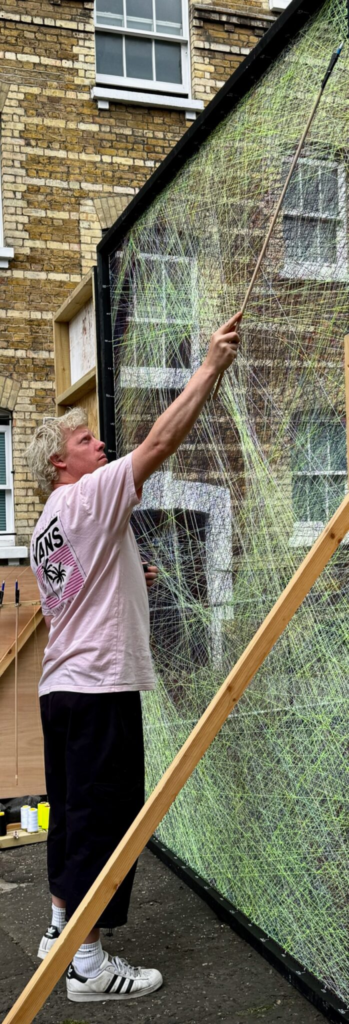
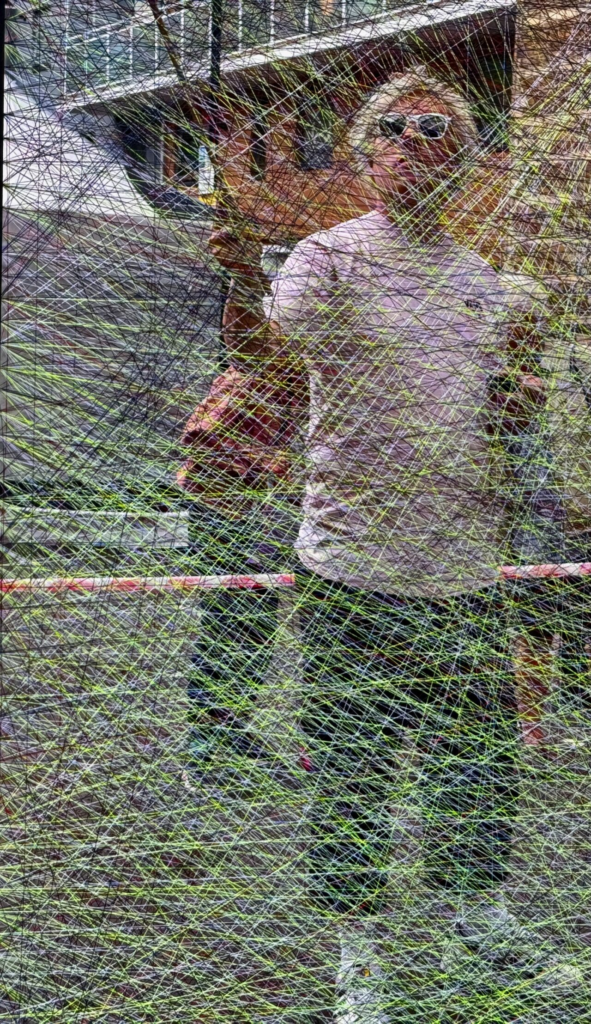
Nearby on Roscoe Street, the mysterious headless man – also created at the Party …
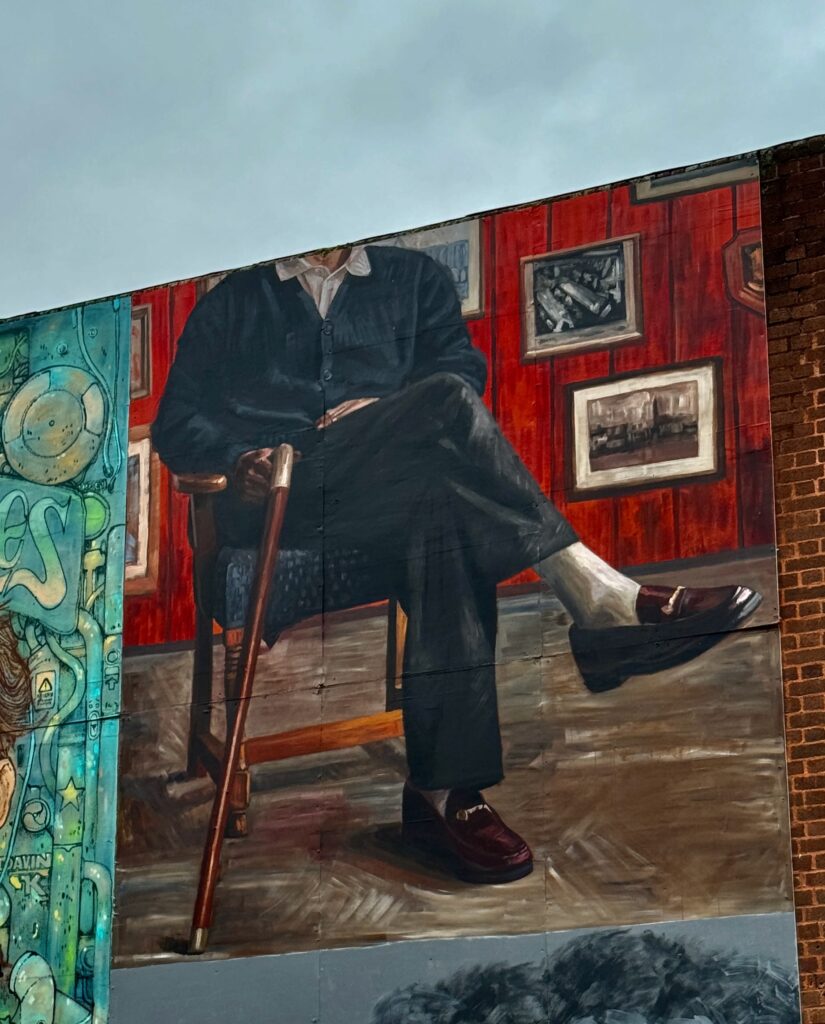
Tyger Tyger on Baird Street …
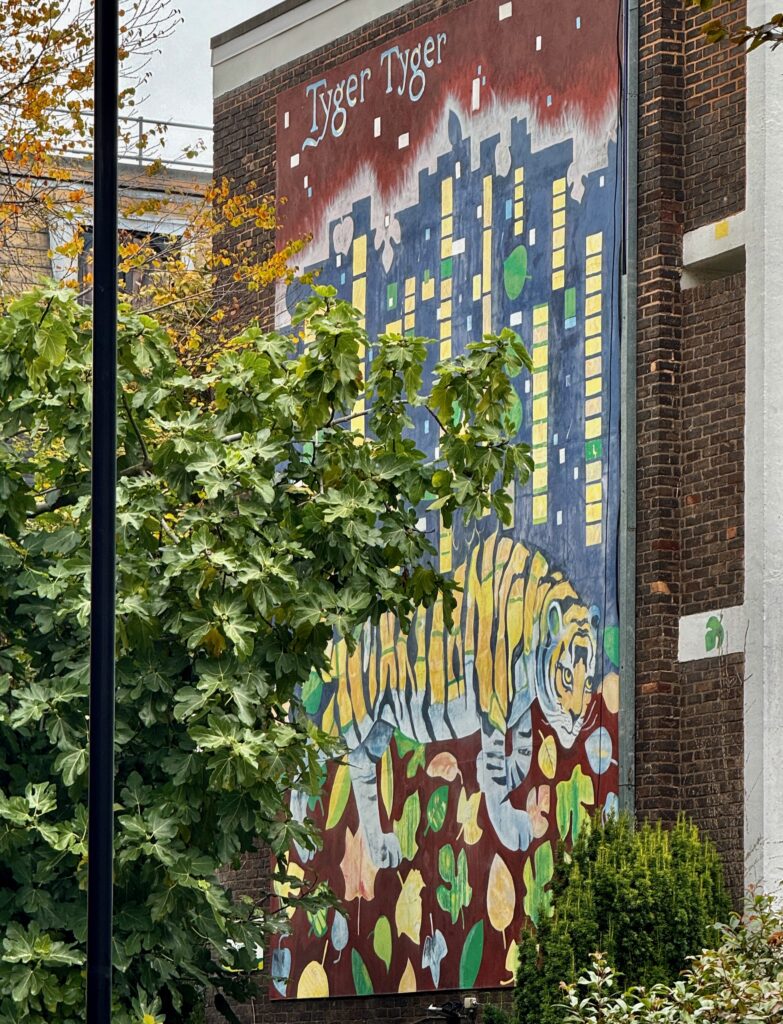
A Chequer Street EC1 celebration …
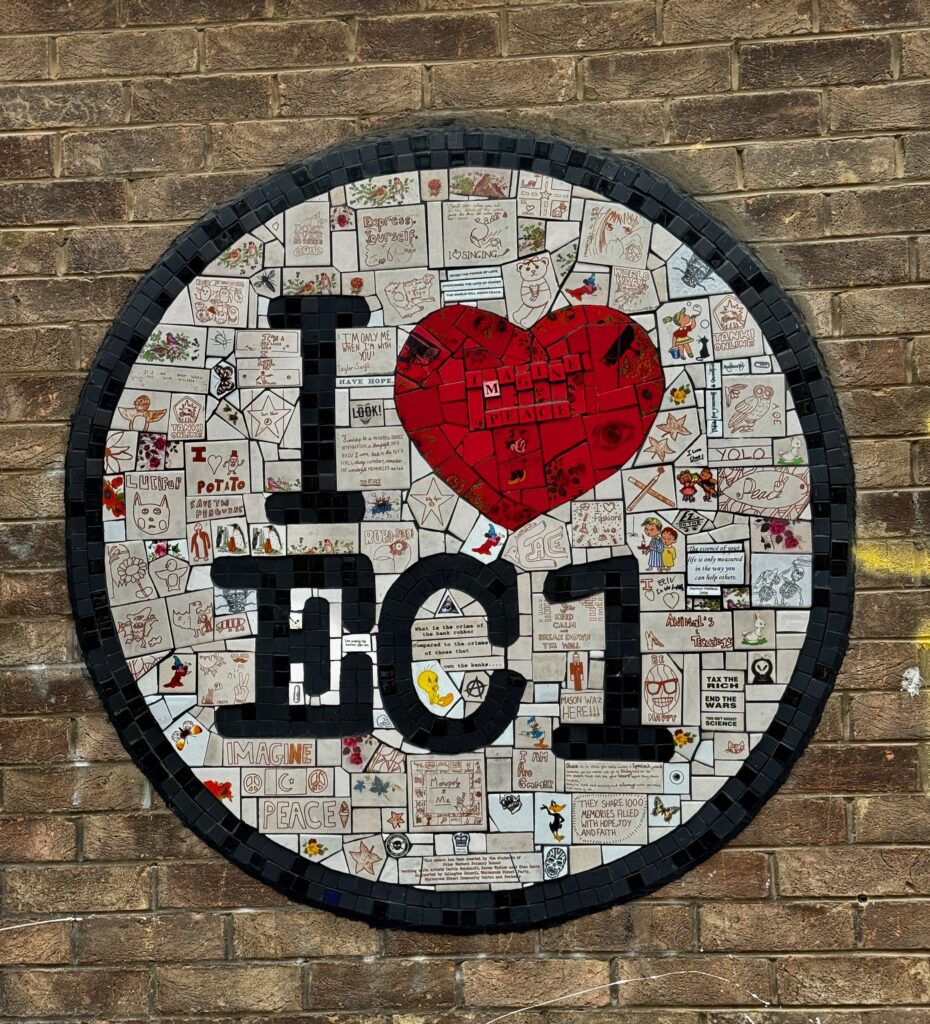
… and a mosaic on the same building …
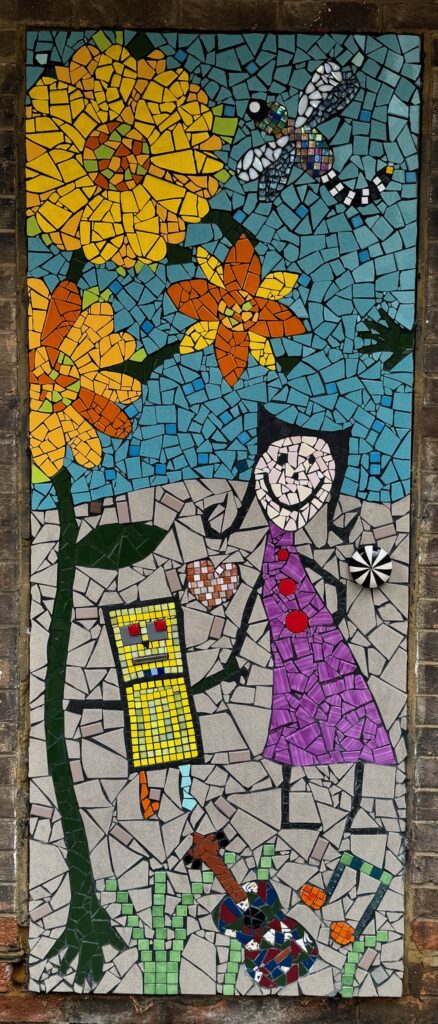
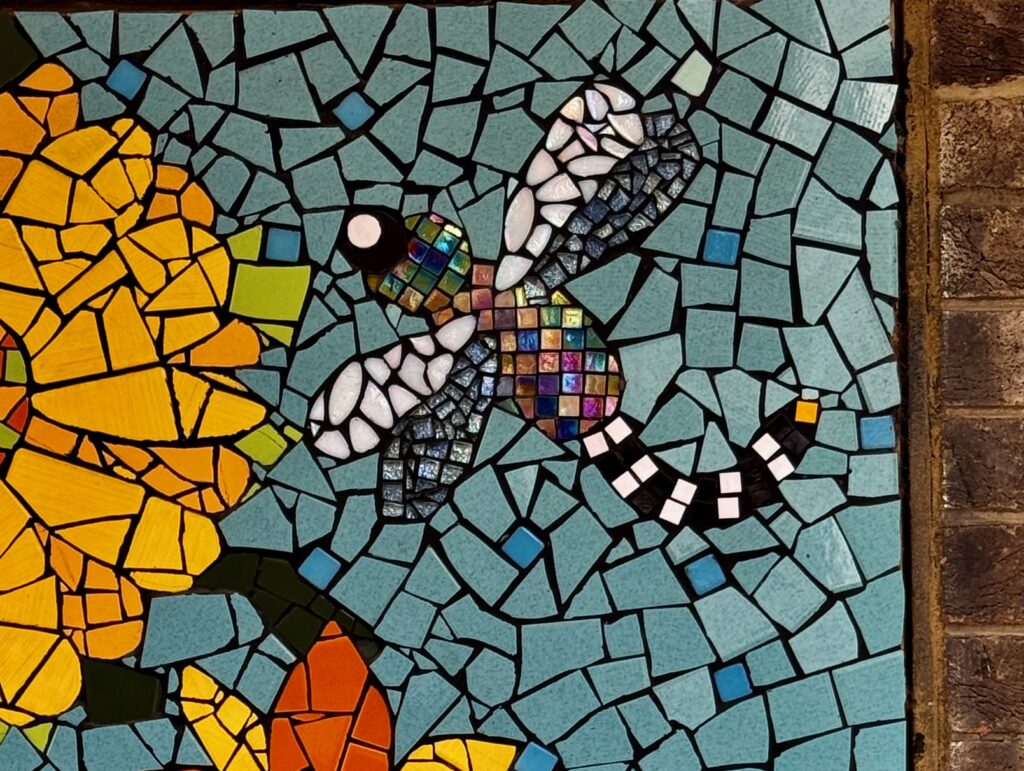
Pretty door and heart combined at 65 Banner Street …
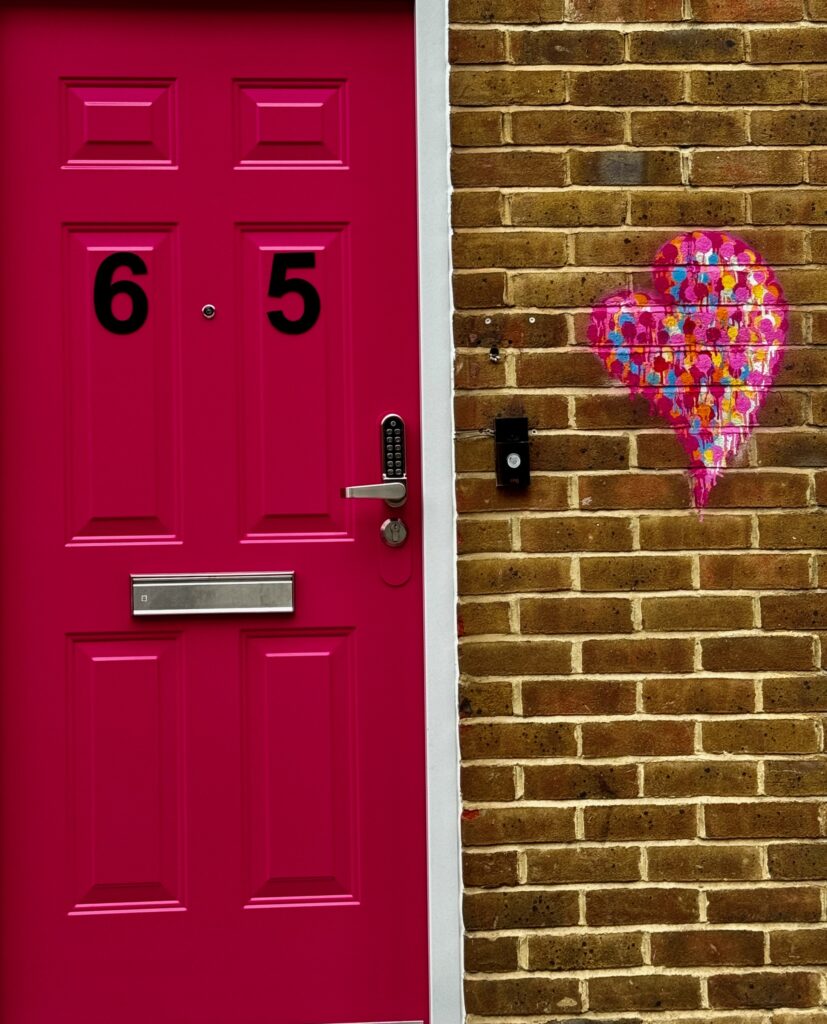
In a nearby car park …
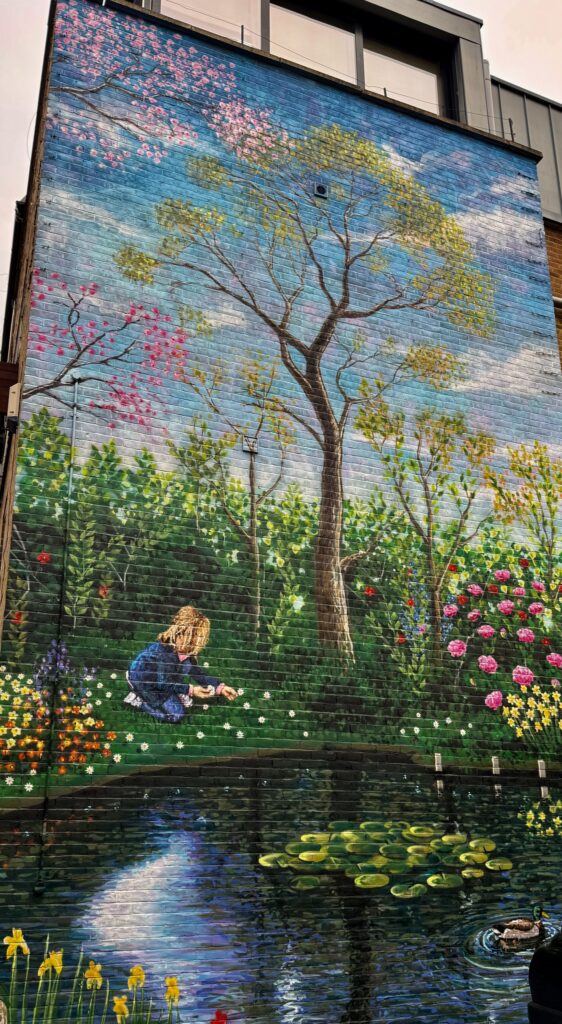
I love the honey coloured bricks of the Peabody Estate …
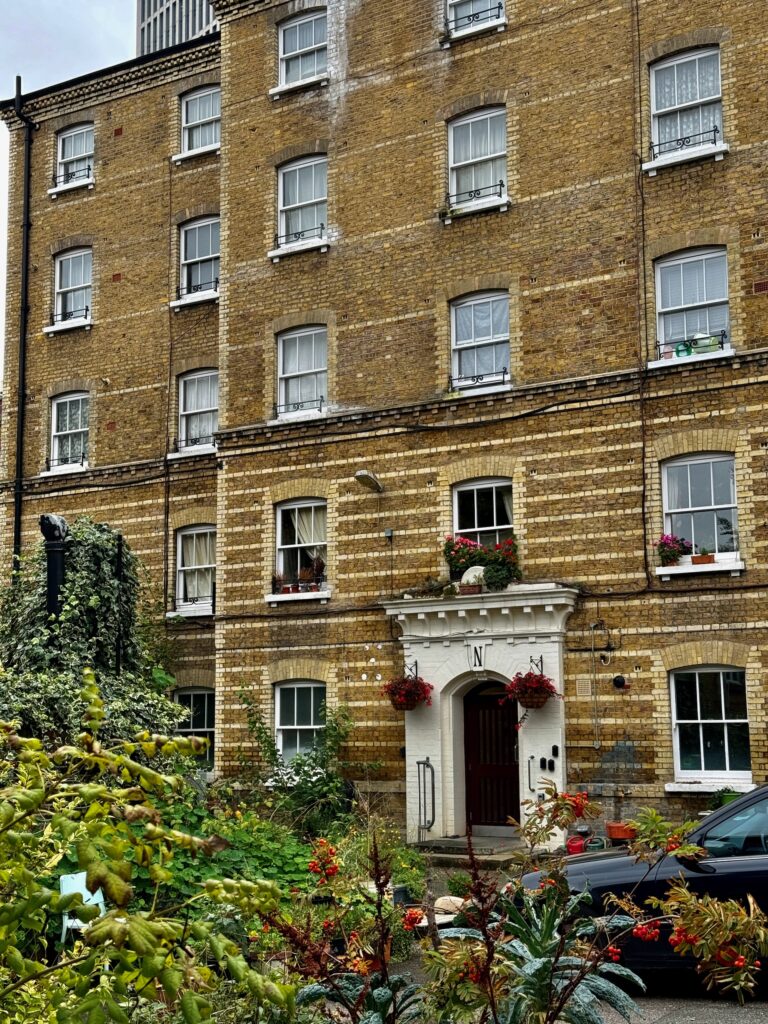
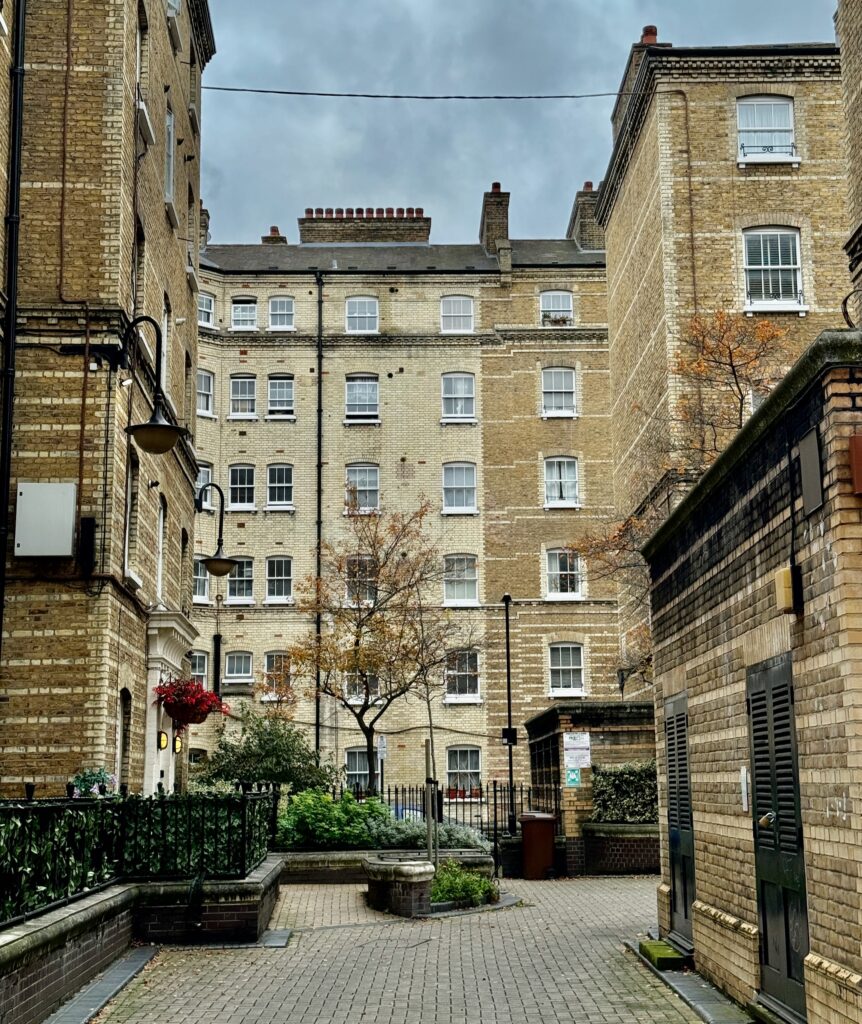
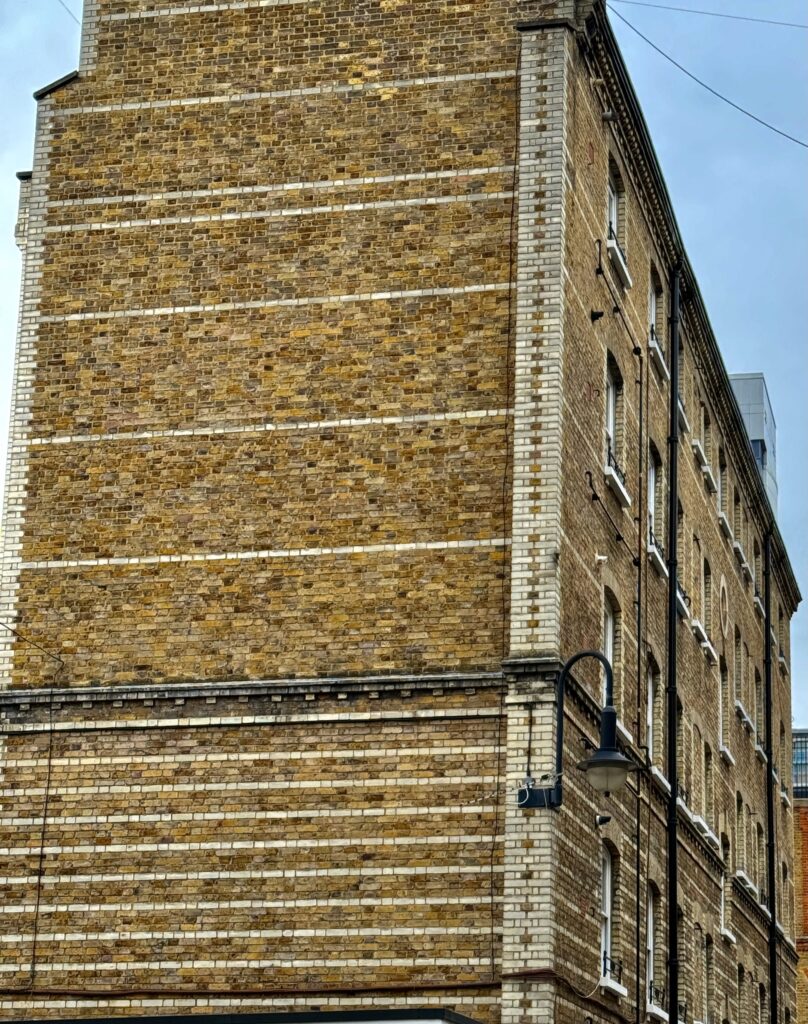
In the foreground, another piece left over from the Party …
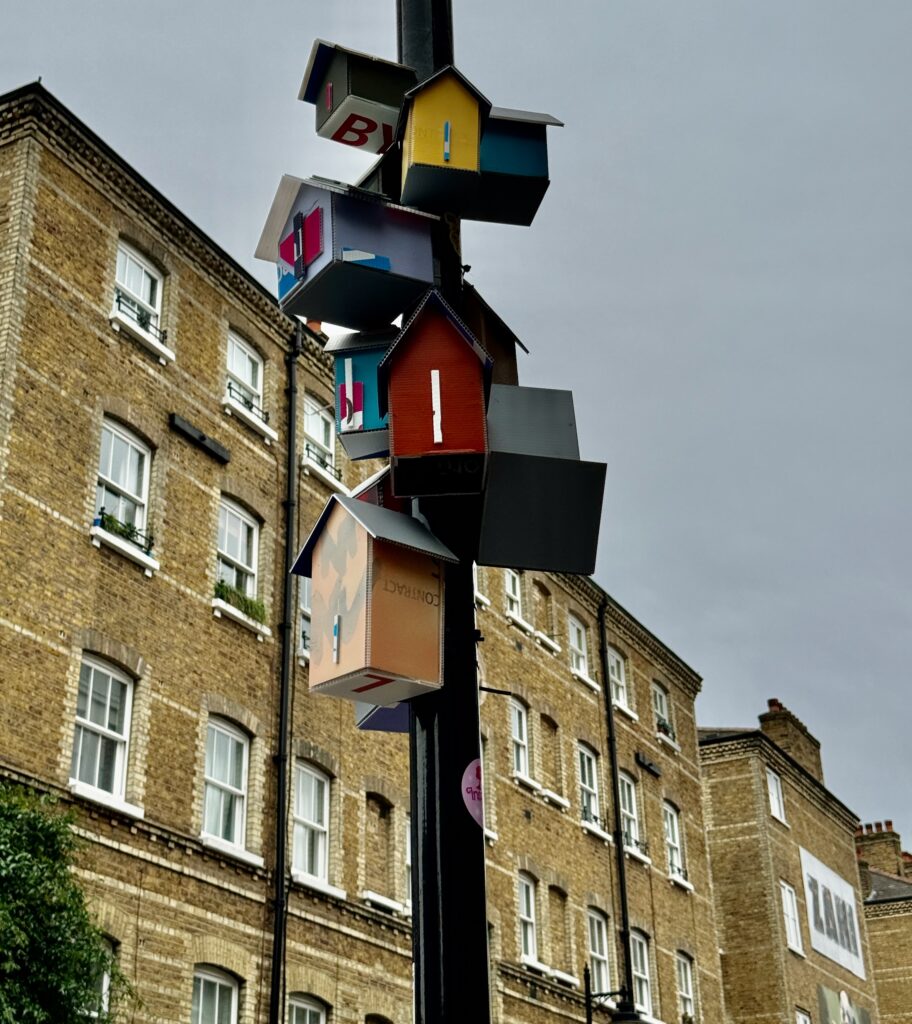
And finally, consider this tree at the west end of Chequer Street …
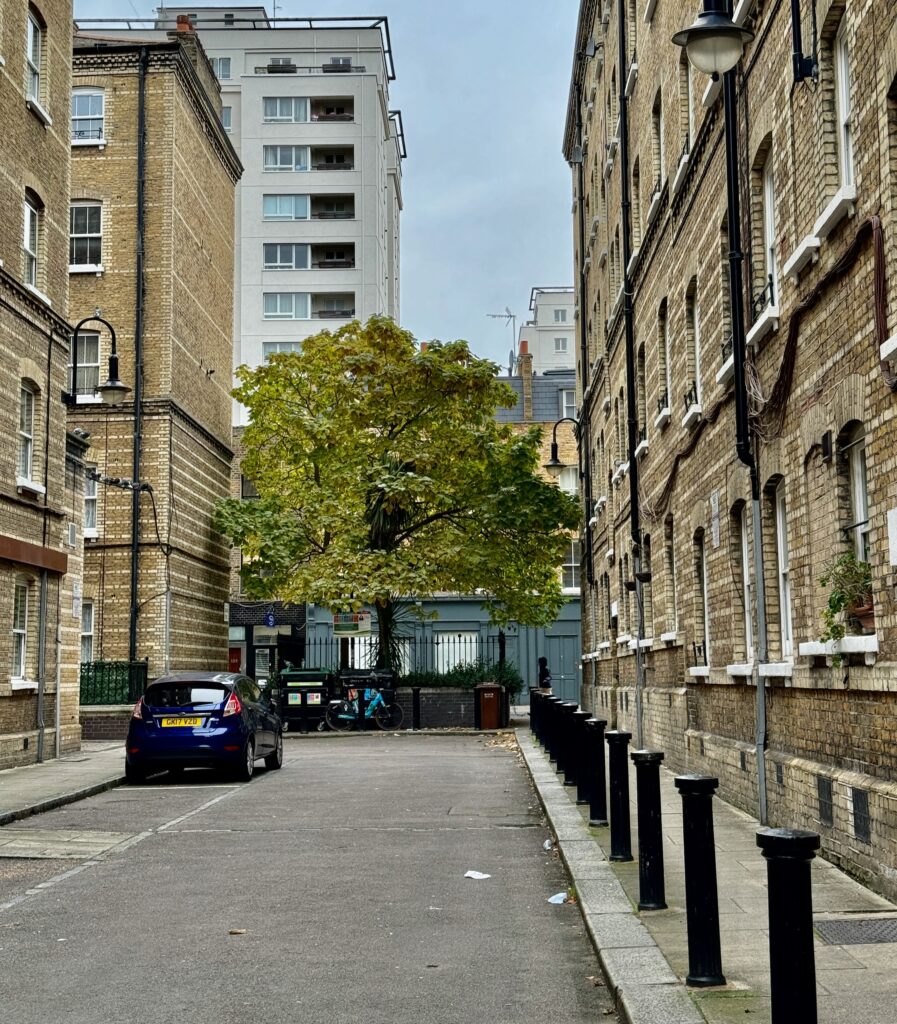
My scientist friend Emma reliably informs me that it’s an Indian Bean Tree, Catalpa Bignonioides …
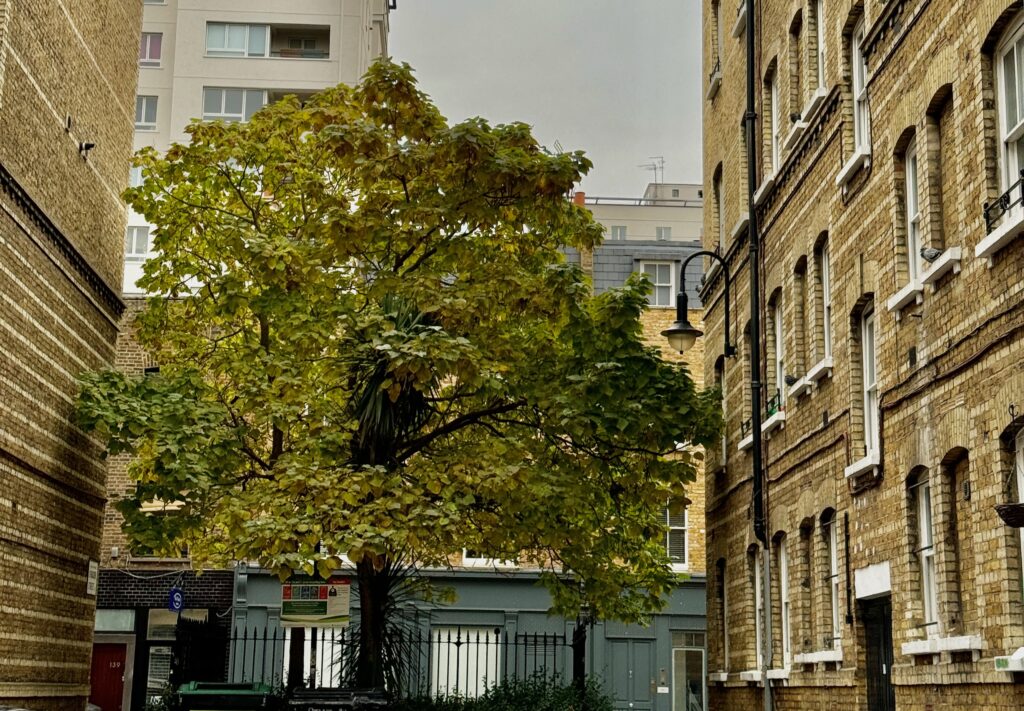
The view from Whitecross Street …
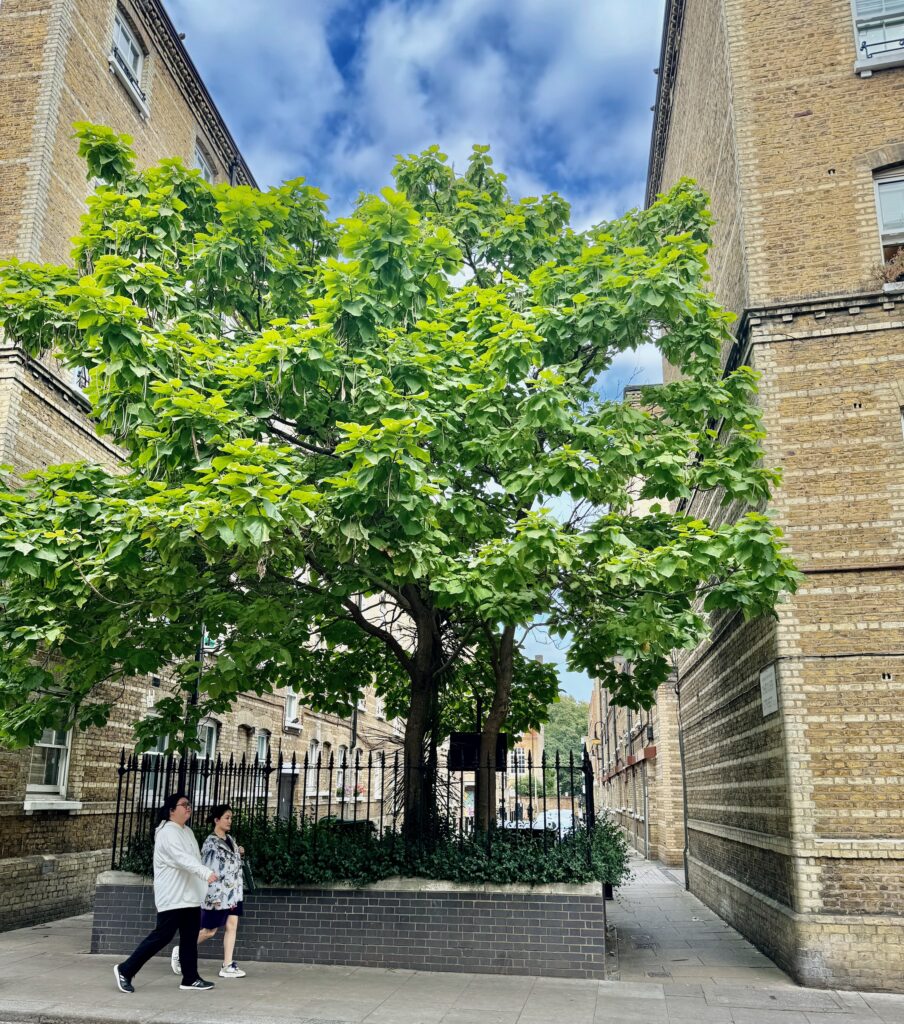
These trees are described online as ‘principally grown for their broad headed attractive foliage, exquisite bell shaped summer flowers and in autumn they develop bean-like hanging fruit which persist through winter’.
Here’s an example of the fruit on the Chequer Street tree …
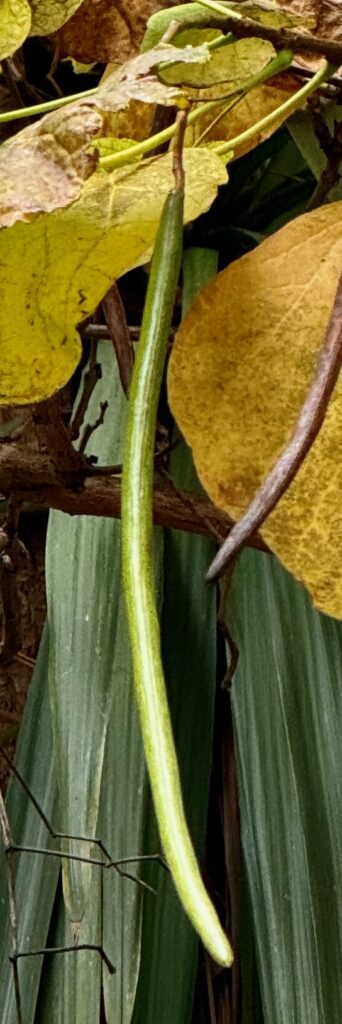
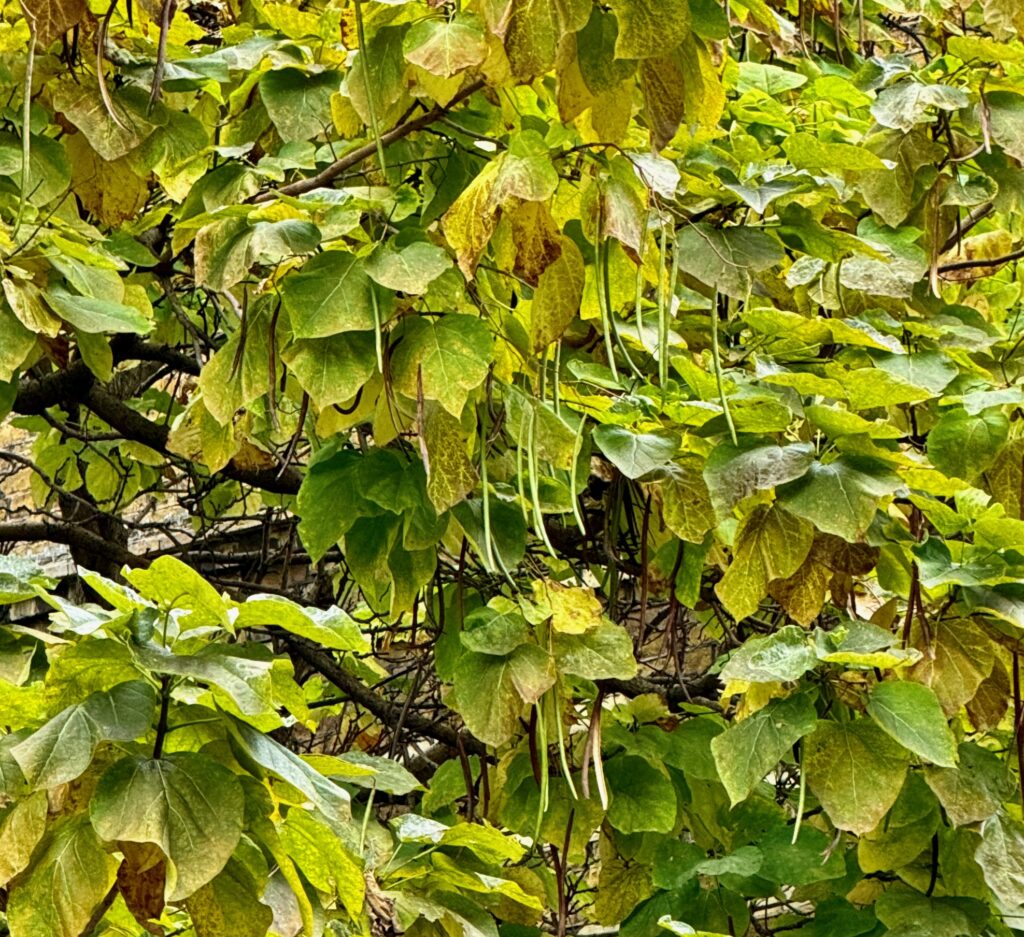
In my view, this tree is evidence of the considerable thought that went into the planning of the Peabody Estate environment as well as the buildings themselves.
Incidentally, the estate also boasts a man-eating Agavi plant …
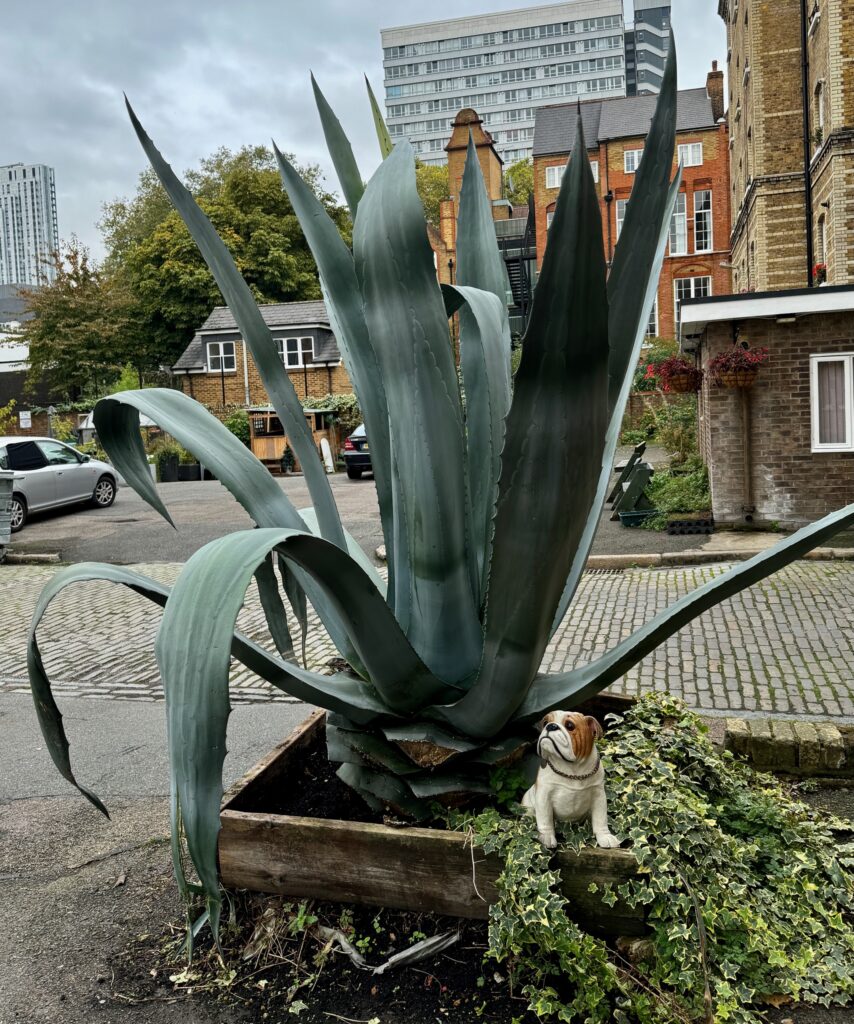
Mr Peabody features strongly in my book Courage, Crime and Charity in the City of London which you can buy using the link on this site – only £10. Or just pop in to the Daunt Bookshop in Cheapside or Marylebone High Street.
If you would like to follow me on Instagram here is the link …
